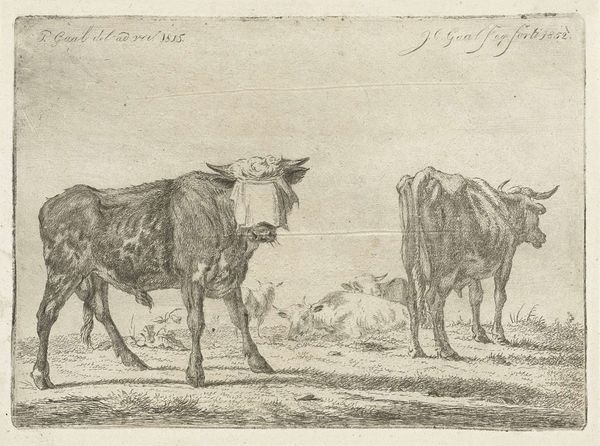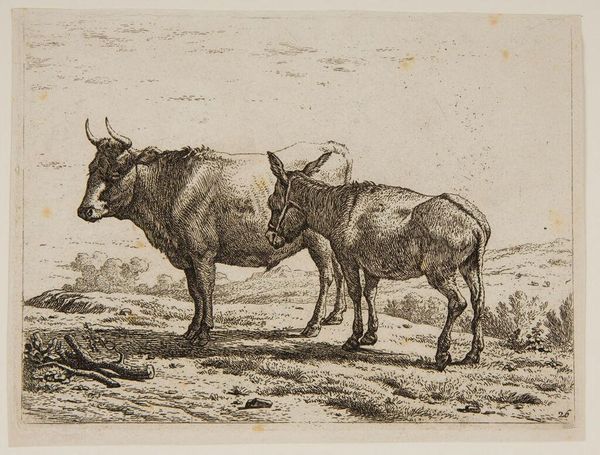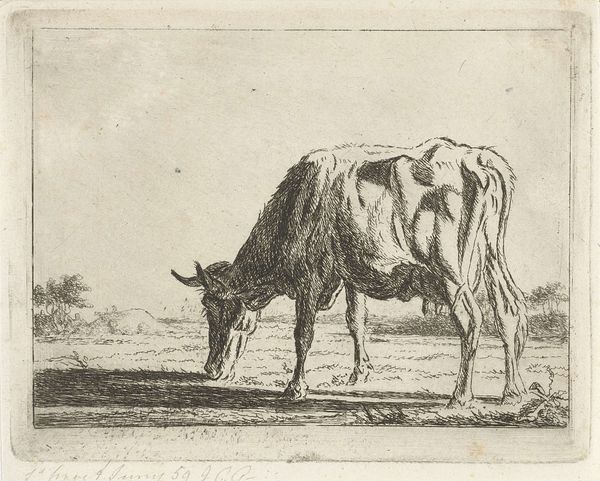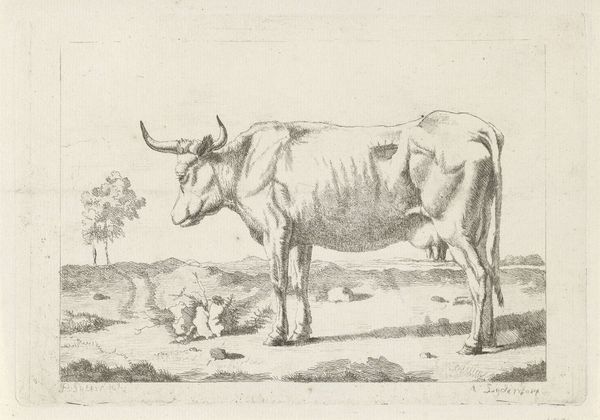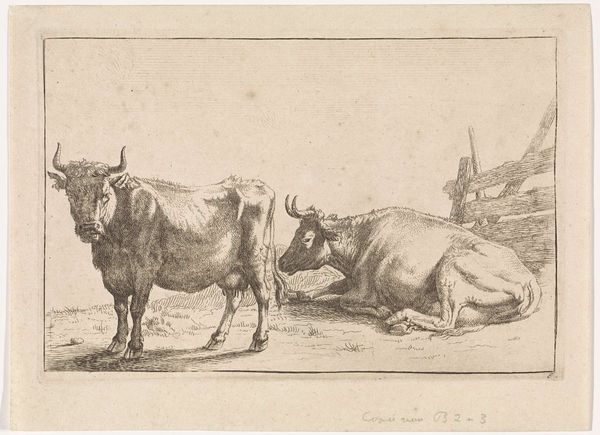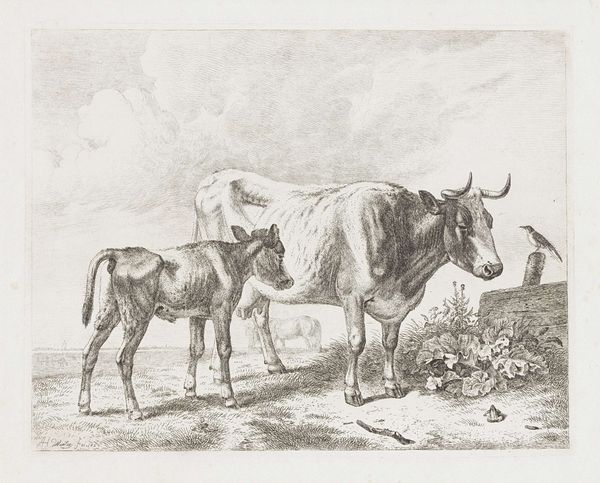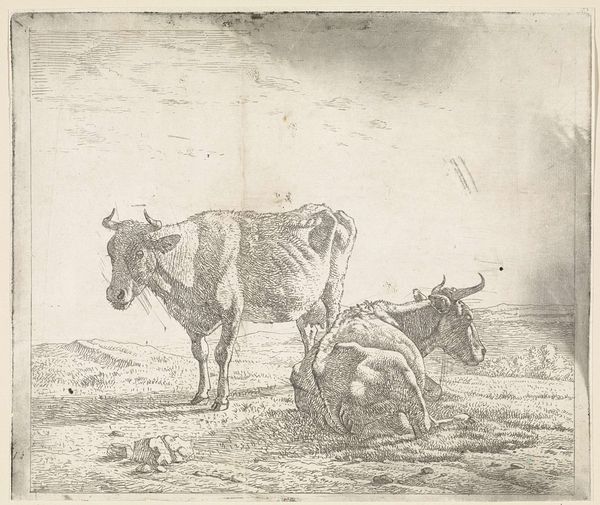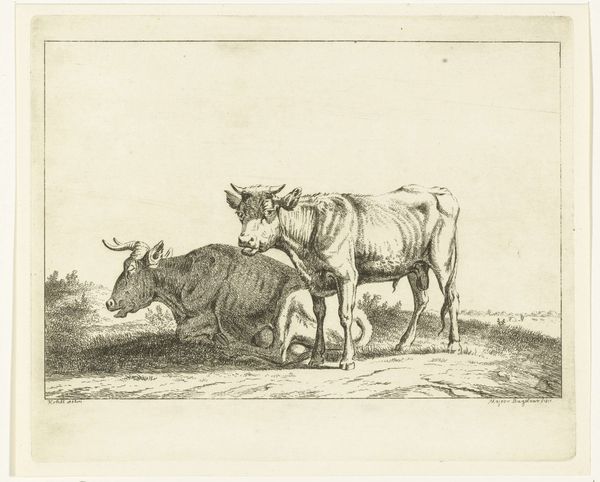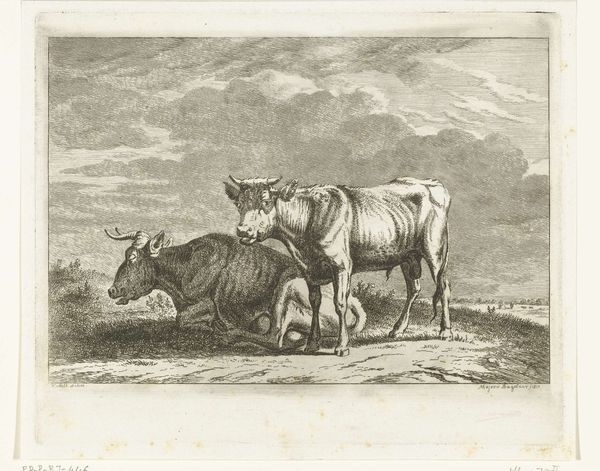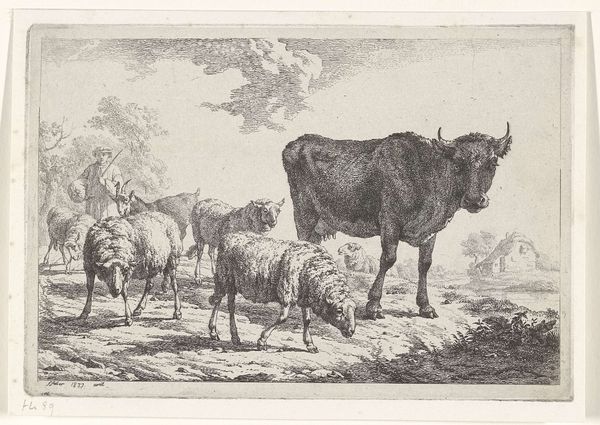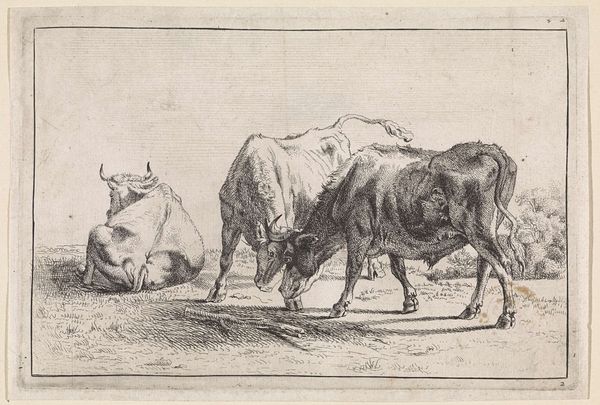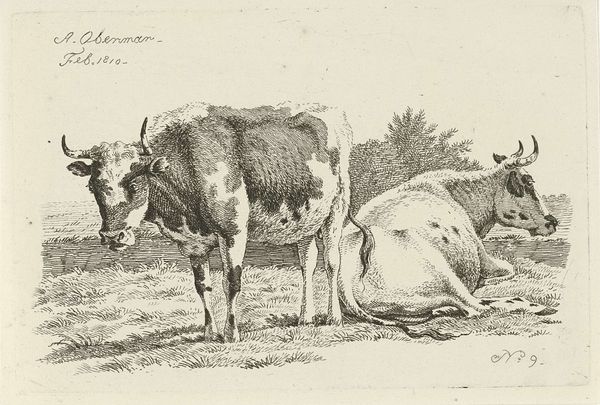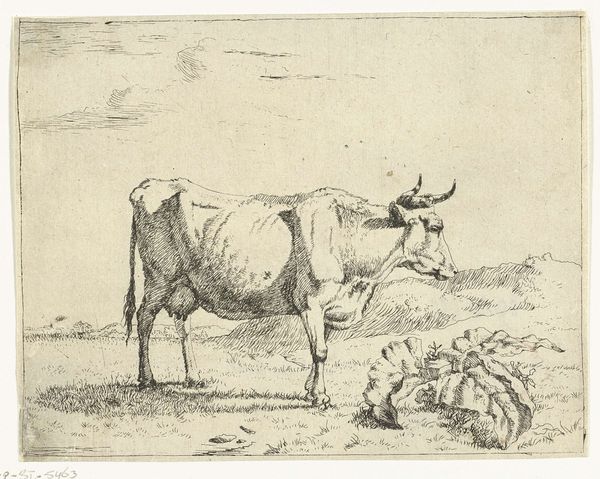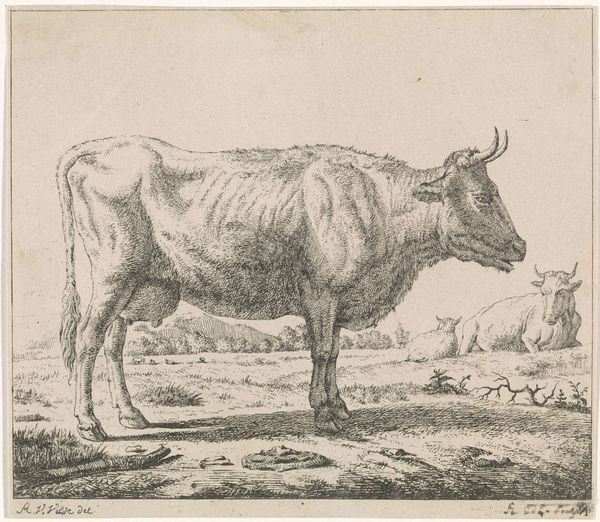
print, etching
#
animal
# print
#
etching
#
landscape
#
genre-painting
#
realism
Dimensions: height 117 mm, width 162 mm
Copyright: Rijks Museum: Open Domain
Curator: This etching, "Geblinddoekte stier bij kudde runderen," or "Blindfolded Bull with Herd of Cattle," was completed in 1852 by Jacobus Cornelis Gaal. Editor: It's striking! The most prominent bull is literally blindfolded! The sharp lines of the etching give it a somewhat somber and gritty feeling. The material looks rather delicate for the scene represented. Curator: Indeed, and this visual tension is quite suggestive, considering the patriarchal and agricultural realities of 19th-century Netherlands. The blindfold could symbolize ignorance or a deliberate turning away from the plight of working animals or from a critical perspective on animal labor. It invites viewers to confront their own blind spots. Editor: From a formal point of view, I find the composition quite remarkable, specifically in its usage of shading and line to define the animal’s musculature. Also, observe how Gaal's realism flirts with more romantic landscapes that allow the artwork's setting to contrast with the close-up depiction of the blindfolded animal, which feels almost allegorical. Curator: Exactly, consider the context of burgeoning industrial agriculture. The selective blurring of the herd can point towards a larger phenomenon where individuality and care for animals diminish, in contrast to idealized notions of rural life. This can invite questions about social class and our alienation from nature. Editor: It almost functions as an allegory. Blindness could symbolize humanity's willingness to ignore moral obligations. I also detect something structuralist in the implied binary, with freedom representing animals against their limited agency regarding nature, their only true habitat. Curator: It definitely serves to destabilize simplistic readings. And it reminds us of ongoing power structures relating to environmental issues. Editor: Analyzing this artwork on its surface reveals only an evocative bucolic vision, but your interpretation prompts an enriched perspective that makes us see a landscape enmeshed in its broader context. Curator: Well, art always asks us to look critically, beyond the aesthetic pleasure.
Comments
No comments
Be the first to comment and join the conversation on the ultimate creative platform.
